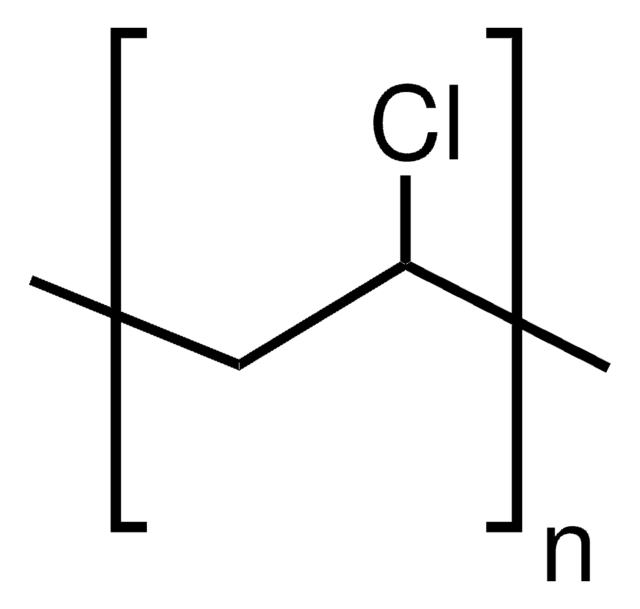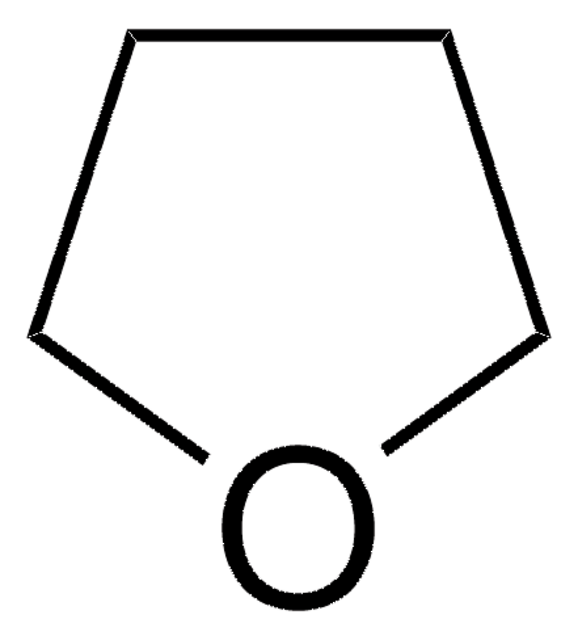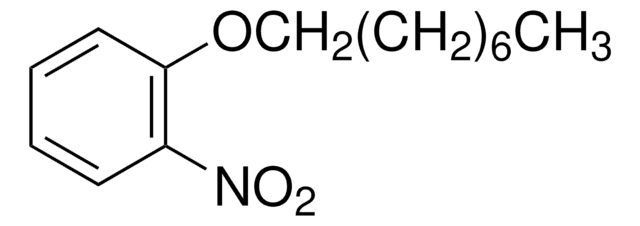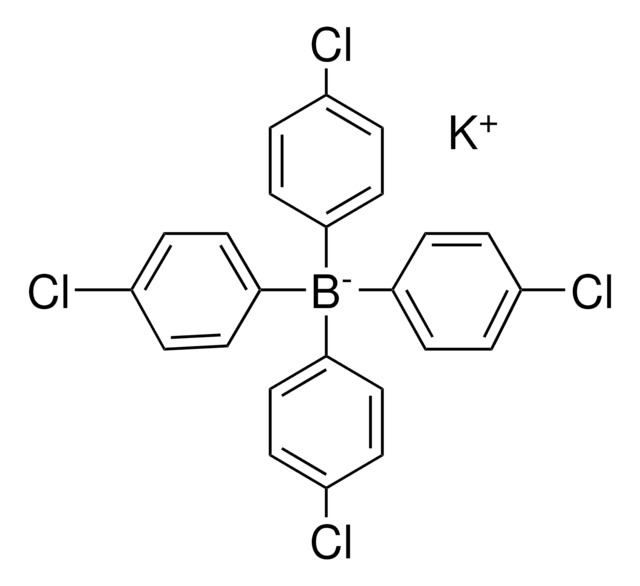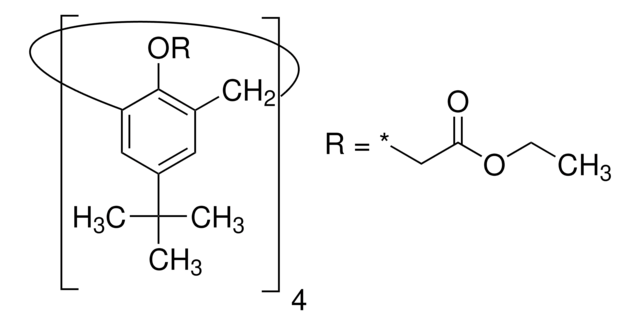81387
Poly(vinyl chloride)
high molecular weight
Synonym(s):
PVC
Sign Into View Organizational & Contract Pricing
All Photos(1)
About This Item
Linear Formula:
(CH2CHCl)n
CAS Number:
MDL number:
UNSPSC Code:
12162002
PubChem Substance ID:
NACRES:
NA.23
Recommended Products
description
K-value 69 - 71
Quality Level
form
powder
density
1.4 g/mL at 25 °C (lit.)
application(s)
battery manufacturing
SMILES string
ClC=C
InChI
1S/C2H3Cl/c1-2-3/h2H,1H2
InChI key
BZHJMEDXRYGGRV-UHFFFAOYSA-N
Looking for similar products? Visit Product Comparison Guide
Related Categories
Application
Poly(vinyl chloride) can be used as a polymeric matrix that facilitates the formation of membrane electrodes for applications such as biological sensors, polymer based electrolytes, and other electrochemical sensors.
wgk_germany
WGK 3
flash_point_f
Not applicable
flash_point_c
Not applicable
ppe
dust mask type N95 (US), Eyeshields, Gloves
Certificates of Analysis (COA)
Search for Certificates of Analysis (COA) by entering the products Lot/Batch Number. Lot and Batch Numbers can be found on a product’s label following the words ‘Lot’ or ‘Batch’.
Already Own This Product?
Find documentation for the products that you have recently purchased in the Document Library.
Customers Also Viewed
Screen-printable porous glass: a new material for electrochemical sensors
Cranny A, et al.
Journal of Materials Science: Materials in Electronics, 26(7), 4557-4564 (2015)
Conductivity, dielectric behavior and FTIR studies of high molecular weight poly (vinylchloride)-lithium triflate polymer electrolytes
Ramesh S and Chai MF
Materials Science and Engineering, B, 139(2-3), 240-245 (2007)
A DNA-based coated wire membrane sensor for selective determination of amiloride in pharmaceutical compounds, plasma and urine
Allafchian A and Ensafi AA
Journal of the Brazilian Chemical Society, 21(3), 564-570 (2010)
Christopher B Stipe et al.
Applied spectroscopy, 66(11), 1286-1293 (2012-11-14)
Airborne silica dust (quartz) is common in coal mines and represents a respiratory hazard that can lead to silicosis, a potentially fatal lung disease. With an eye toward developing a portable monitoring device for rapid analysis of silica dust, laser-induced
T D Ambrisko et al.
British journal of anaesthesia, 110(2), 305-310 (2012-11-21)
In a previous study, the authors found a large bias (50%) for lithium (LiDCO) compared with thermodilution cardiac output measurement methods in ponies receiving i.v. infusions of xylazine, ketamine, and midazolam. This prompted the authors to examine the effect of
Our team of scientists has experience in all areas of research including Life Science, Material Science, Chemical Synthesis, Chromatography, Analytical and many others.
Contact Technical Service